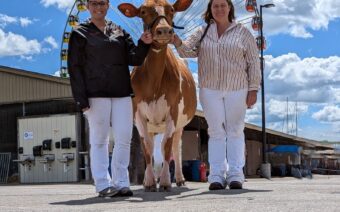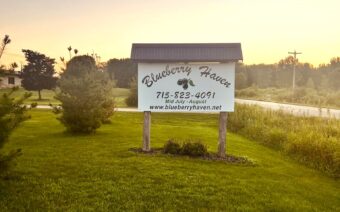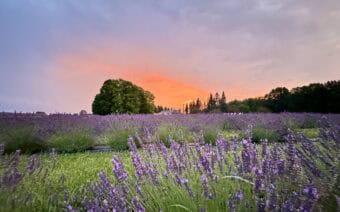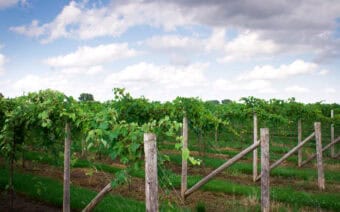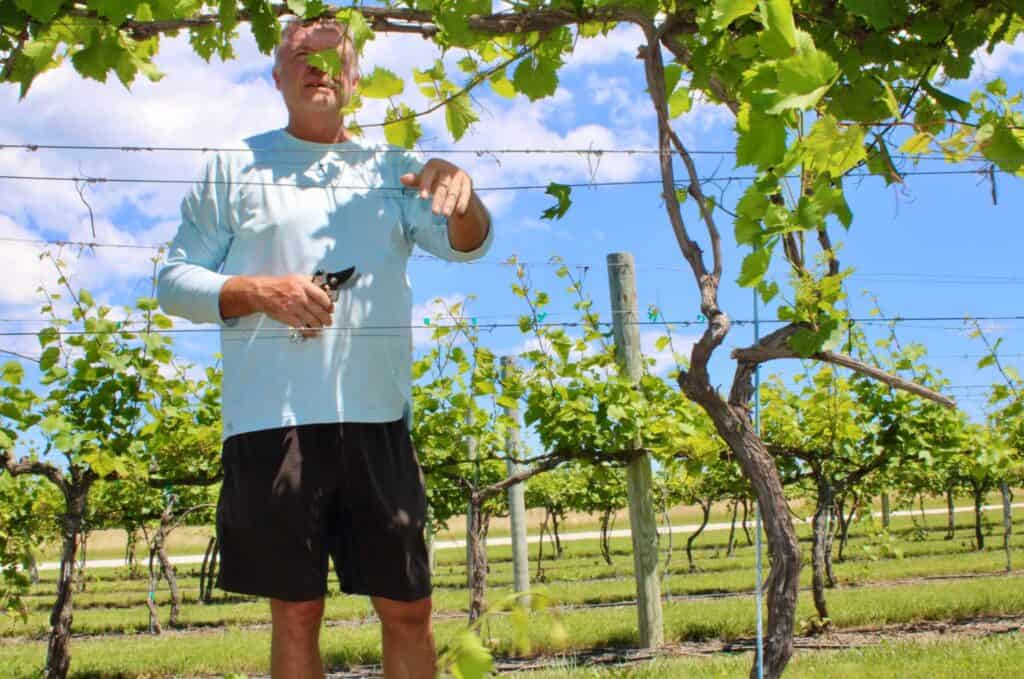
August 26, 2024
NORTHEAST WISCONSIN – Steve Johnson, co-owner and winemaker at Parallel 44 & Door 44 wineries, said Wisconsin is known for many things – the Green Bay Packers, cheese, a nice disposition.
Johnson said if it’s up to him, and a handful of other local wineries, the Badger State will also be known for wine.
“Adding wine to the list of things Wisconsin can be proud of, I think, is a big deal,” he said. “Wine made in Wisconsin is worthy of being paid attention to.”
This effort, Johnson said, started with the launch of the “Ledge Blanc” – a new wine consortium marked by both regional significance and quality standards – with four inaugural winery members: Parallel 44 & Door 44 in Kewaunee and Door Counties, Mixed Meadia in Egg Harbor, Anchored Roots south of Egg Harbor and Silarian vineyards in Manitowoc County.
Though wanting Wisconsin wine to be taken more seriously in the wine industry has been a long-standing desire, Johnson said finding a way to make that happen was recently sparked.
Ledge Blanc – which is referred to as a Vintners Quality Alliance (VQA) – is modeled after a wine quality and marketing program followed by wineries in the Canadian province of Nova Scotia, called Tidal Bay Wines.
“The marketing program focused on educating and defining wines from Nova Scotia,” he said. “Nova Scotia is kind of like us in the sense that it’s new to the world of wine.”
The spark
In reality, Johnson said though wine has been regularly produced in Wisconsin for more than 30 years, “it doesn’t have the respect that it should.”
“If you say a wine is a Wisconsin wine, there is an automatic assumption that it’s a fruit wine or a fun wine – but not serious wine,” he said.
Johnson said the focus of Ledge Blanc is to change that narrative.
“I have a drive to put this part of the world on the wine map,” he said. “I’m thinking all the time about how to do that. It will happen. I’m not sure if it will happen in my lifetime, but I’m bound and determined to make it happen.”
Johnson said the mission of Ledge Blanc is to redefine what Wisconsin wine means.

“Let’s face it, even though there are wineries making quality wines in this state, Wisconsin still has a reputation of producing wines from grapes that are either not actually grown in the state or are overly sweet and not considered capable of rivaling wines from the West Coast or Europe in terms of quality or distinction,” he said.
Johnson said Ledge Blanc aims to change that perception.
“It may be an uphill battle due to the perceived infancy of our industry compared to places like Napa Valley or Oregon, but the reality is that there is a growing number of wines grown right here in Wisconsin that are receiving national and international awards,” he said.
Over the last 10-15 years, Johnson said Wisconsin vintners have become adept at growing grapes and crafting distinct wines that many thought was not possible.
“Now our focus is on telling the world what we do here in Wisconsin, particularly the Wisconsin Ledge,” he said.
Though tourism has oftentimes been the main stake in Wisconsin wine, Johnson said he and a few others have the mindset that “any serious wine region, while they love tourism, they build their brand and reputation based on the quality and use of the product.”
Many wines made in Wisconsin, Johnson said, perform really well in competitions.
“I think we’ve been somewhat hampered by Midwest-modestness, in the sense that there’s no way we can compete with California or in Europe,” he said. “But in reality, at competitions, the judges love them.”
Just as folks in Green Bay or Milwaukee or Madison will ask for a cabernet from Napa or a Pinot from Oregon, Johnson said he looks forward to the time when folks in New York or Atlanta or Los Angeles say, “I want a La Crescent from the Wisconsin Ledge.”
“It’s time to start spreading the message that, ‘believe it or not, in the land of the Frozen Tundra, beer and cheese, there’s now wine to think about,’” he said.
The how
Marketing, Johnson said, is the key to the success of Ledge Blanc – which will be fueled in part by a $75,000 grant the initiative is receiving this fall to help promote and increase the awareness and marketability of distinct and high-quality wines from Wisconsin.
“This is just the beginning of, hopefully, a long-term project to sort of educate and inform the public,” he said.
Once grant funds arrive, Johnson said staff will be brought on to concentrate the initiative’s marketing efforts on the influencers of the wine world – “explain our stories and get more media exposure, especially in the metro areas of the state, where the majority of wine consumers exist.”

“There’s a huge educational component that we have to provide for us to succeed, to go to the next level,” he said.
Johnson said as more people hear about Ledge Blanc, more Wisconsin wineries will want to join the effort.
“We could go from four participating wineries to 10 within the next year if they’re willing to jump to the hoops it takes to get to this point,” he said.
To obtain the Ledge Blanc seal of approval, Johnson said wines must first be vetted and reviewed by a panel that must score the wine at 90 points or higher.
“If you want to be recognized in the wine world, you need a collective of people all pulling in the same direction,” he said. “The reality is, there are so many great wines and wine regions out there, that unless you have (a collective achieving excellence) that can be enjoyed by many people, you’re not going to get on the radar of the wine world.”
Therefore, Johnson said the more wineries that join the consortium, “the better we will be and the faster the message will be sent out.”
He said typically, it takes four or five generations before a wine region gets significance – “but, I don’t think we need to wait that long.”
“I think there’s enough young people with the passion now that, collectively, we make a splash in the wine world,” he said.
Though it is still an “uphill battle – because people in our own state boundaries don’t even know what we’re doing” – Johnson said there are enough Wisconsin winemakers that are confident with the quality and distinctiveness of this “that it’s worth this effort to spend the time and money to do this.”
Johnson said Parallel 44 & Door 44 wineries, along with Anchored Roots and Mixed Meadia have already released their Ledge Blanc wines, with Silarian Vineyards soon to follow.
“This may be the most exciting thing to happen to Wisconsin wines ever,” he said. “Not only are we offering wines that are certified as grown in the Wisconsin Ledge Wine Appellation, but it also works to define the best white wine style from this part of the world.”
Small step, big impact
In an industry where there are now more than 11,000 wineries in the United States, Johnson said standing out on the shelves of grocery and wine stores can be daunting, to say the least.
That is why the consortium has partnered with 18 Festival Foods stores across the state to place Ledge Blanc wines in the Sauvignon Blanc section – instead of the Wisconsin wine section.
“This signals to all customers and wine enthusiasts that this wine is worthy of being placed alongside some of the most popular and best Sauvignon Blanc wine brands of the world,” he said. “You should be able to identify the Ledge Blanc wine by the neckhangers on the bottles.”
The store locations, he said, include: Wausau, Stevens Point, Manitowoc, Sheboygan, Neenah, Oshkosh, Marshfield, Darboy (Appleton), Fond du Lac, De Pere, Menasha, Suamico, Appleton North, Green Bay East, Green Bay North, Eau Claire Mall, Janesville, Onalaska and Fort Atkinson.
Wisconsin is prime wine country
The rural, natural and agricultural characteristics of America’s Dairyland, Johnson said, is what Wisconsinites appreciate most about it.
“Promoting wine that reflects Wisconsin from ground to glass (is a part of that),” he said.

The life of a winemaker, Johnson said, is a lot of work.
“It is very manually intensive, but if you can produce a product that has significance, 40 acres of grapes can be 10 times more valuable than 40 acres of soybeans or corn,” he said. “I’ve been continually pushing to get more people to start growing grapes. Up and down the Door County Peninsula, wherever there are orchards – that is actually a perfect site for a vineyard.”
Johnson said if you take a trip to the Champagne or Loire Valley regions of France, “you look out the window and it’s vineyard after vineyard after vineyard.”
“Here in Wisconsin, you look out and it’s cornfield after cornfield after cornfield,” he said. “But there is a potential someday that we could have vineyards up and down the peninsula.”
Johnson said the Wisconsin Ledge – an American Viticultural Area in Northeast Wisconsin along the Niagara Escarpment in Door, Kewaunee, Manitowoc, Sheboygan, Ozaukee, Washington, Dodge, Fond du Lac, Calumet, Outagamie and Brown counties – makes the state a prime location for grapes.
“And that isn’t just me saying that,” he said. “It was certified by the United States Department of the Treasury’s Alcohol and Tobacco Tax and Trade Bureau, which says, ‘you do have something uniquely significant here – in terms of soil, your topography and climate – that’s going to make a wine that has a regional and varietal significance.’”
Johnson said the best is yet to come.
“I am confident that our Ledge Blanc VQA will redefine Wisconsin wine and eventually reach recognition well beyond the borders of this state,” he said.
 Helping young entrepreneurs discover, build upon the possibilities
Helping young entrepreneurs discover, build upon the possibilities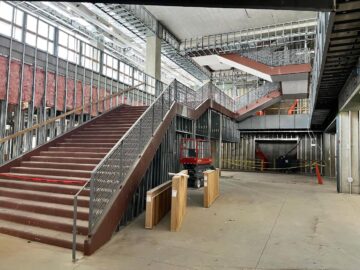 Daigle Brothers – Building Wisconsin one steel column at a time
Daigle Brothers – Building Wisconsin one steel column at a time


